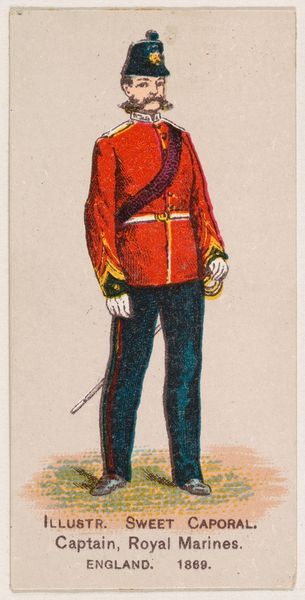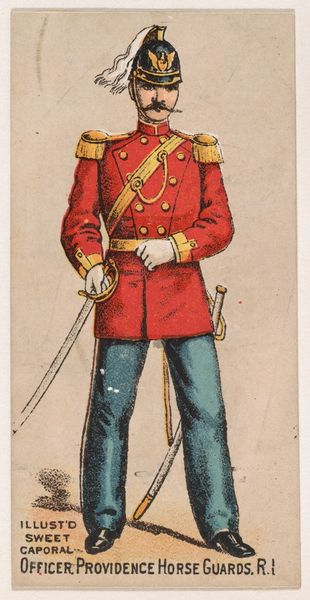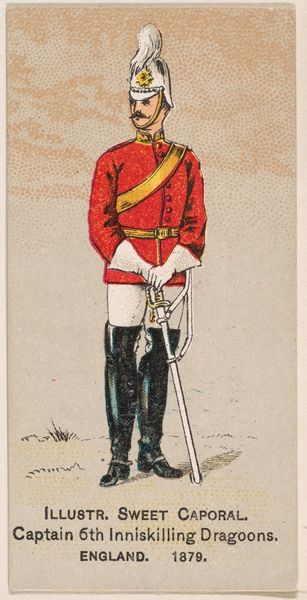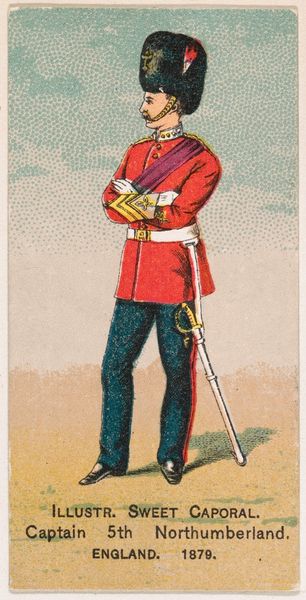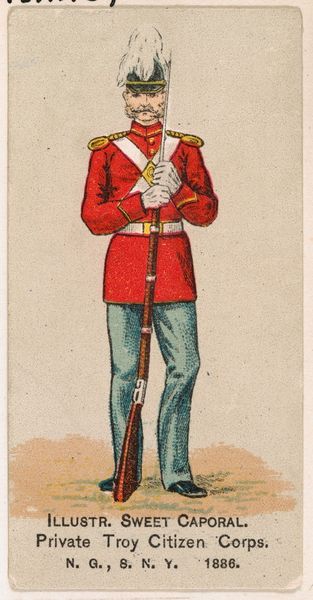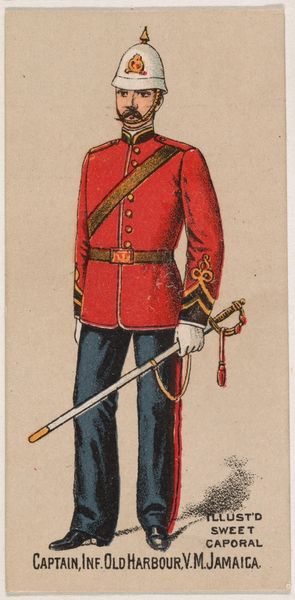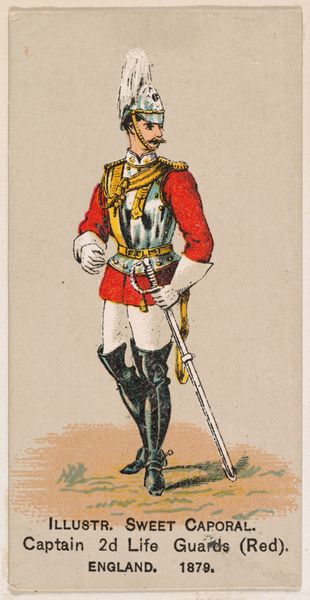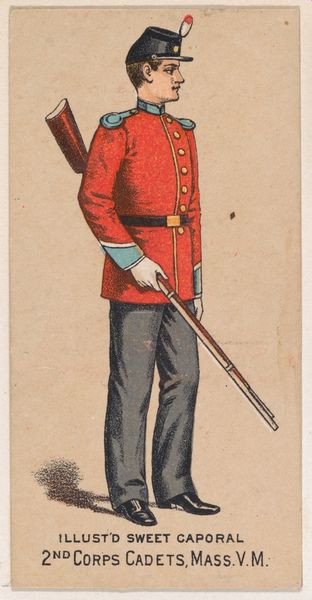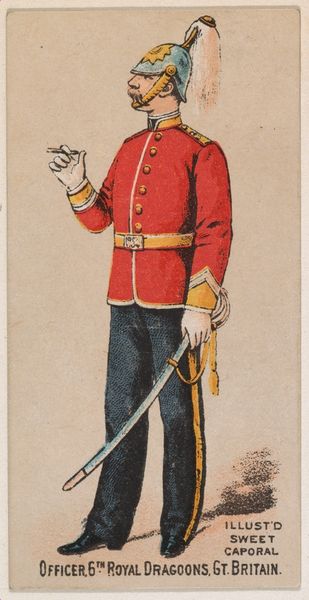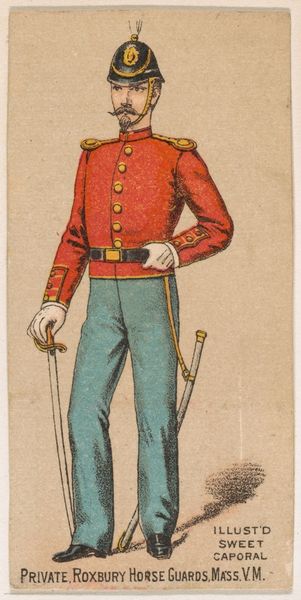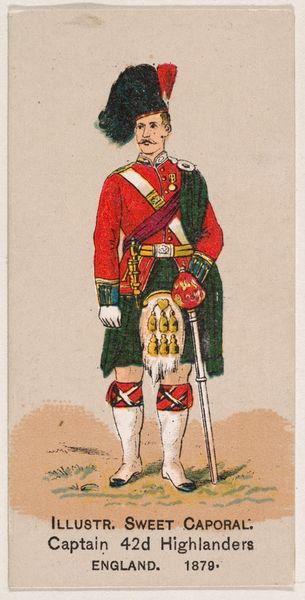
Captain Grenadier Guards, England, 1879, from the Military Series (N224) issued by Kinney Tobacco Company to promote Sweet Caporal Cigarettes 1888
0:00
0:00
drawing, lithograph, print
#
portrait
#
drawing
#
lithograph
# print
#
men
#
sketchbook drawing
#
genre-painting
#
sword
#
profile
Dimensions: Sheet: 2 3/4 × 1 1/2 in. (7 × 3.8 cm)
Copyright: Public Domain
Editor: This lithograph from 1888 by Kinney Brothers Tobacco Company, titled "Captain Grenadier Guards, England, 1879," is strikingly direct in its presentation. The color palette, dominated by red and gold, seems quite assertive for something found on a cigarette card. What do you see in the visual language used here? Curator: The essence resides within the precise delineation of form. Consider the rigorous verticality imposed by the figure's posture and sword, countered only slightly by the curve of his hat. The chromatic structure echoes this tension. The sharp contrast between the red jacket and blue trousers serves to segment the form, denying a holistic read. It fractures visual cohesion. Editor: So, the disjointed visual elements are deliberate? Curator: Indeed. Examine how the gold trim, though intended to unify the elements, in fact, exacerbates the fragmentation. It creates a visual echo, but one that is discordant. It points towards a calculated construction, perhaps reflecting a need to capture attention amidst the visual clutter of commercial ephemera. It compels the eye to move restlessly. Is this dynamism merely functional, or does it imply deeper symbolic disjunction? Editor: I hadn't considered the effect of the color choices. It’s almost like the artist is pulling the image apart even as they're constructing it. Curator: Precisely. And consider how the flatness, inherent to the lithographic process, contributes. It negates depth, preventing easy assimilation of the figure within a spatial context. We are left with surfaces, symbols, a construction rather than a representation. Editor: I guess I was looking for a narrative, but it’s all about the form and the medium. Curator: Exactly. By resisting narrative and embracing its inherent flatness and constructedness, the work reveals the very act of its own making. This self-referentiality constitutes its artistic statement. Editor: That’s a really interesting way to see it; it challenges the idea of these images being simply historical documents. Curator: I am gratified that you recognize the nuances of our discourse. The value lies not in what is depicted, but in *how* it is depicted.
Comments
No comments
Be the first to comment and join the conversation on the ultimate creative platform.
